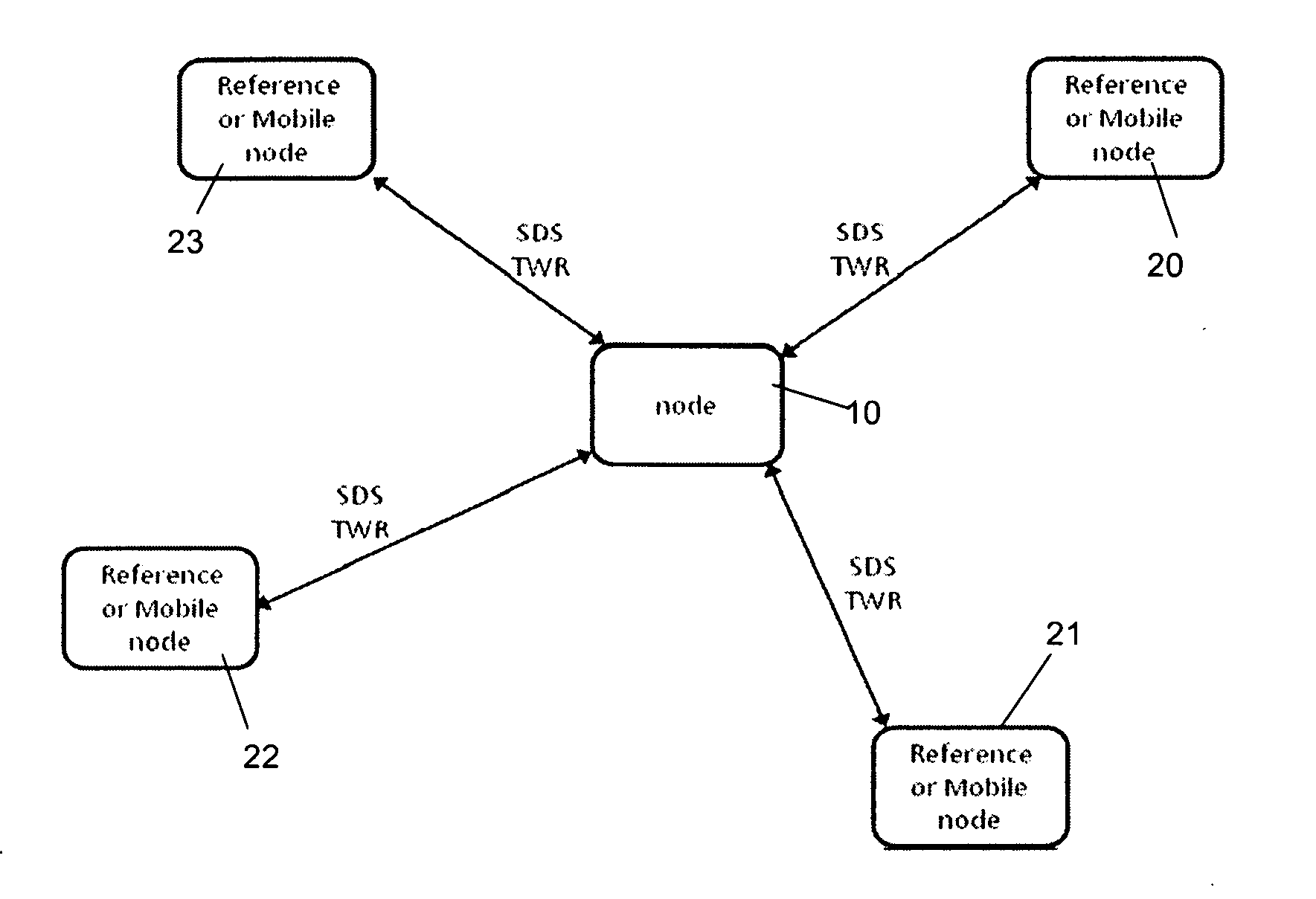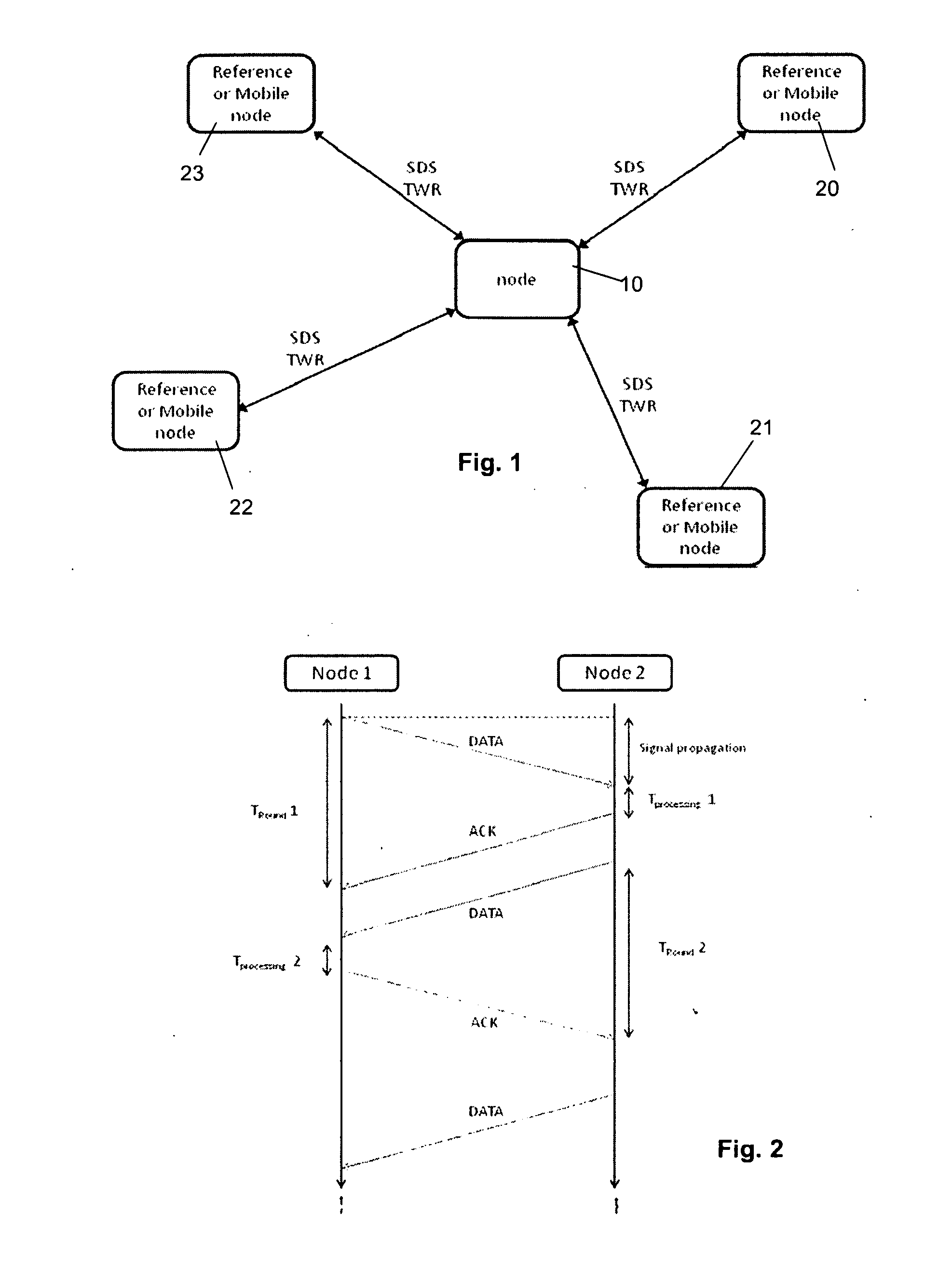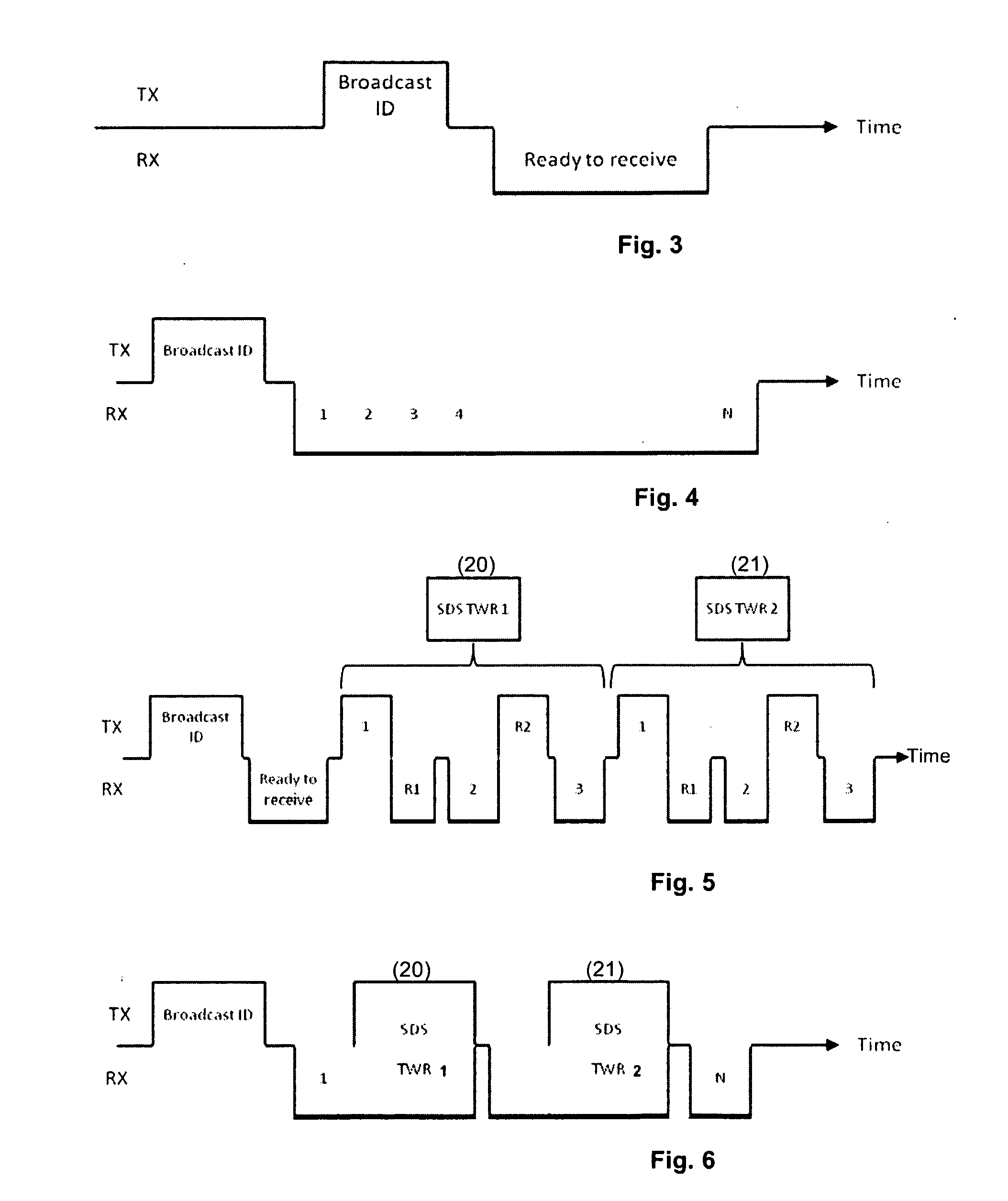Method and system for carrying out a two way ranging procedure
a two-way ranging and ranging technology, applied in the field of two-way ranging procedures, can solve the problem of high power consumption on the side of blind nodes, and achieve the effect of avoiding interference between mobile or reference node packets
- Summary
- Abstract
- Description
- Claims
- Application Information
AI Technical Summary
Benefits of technology
Problems solved by technology
Method used
Image
Examples
first embodiment
[0035]In invention, the reference or mobile nodes 20, 21, 22, 23 indicate their presence in response to an ID broadcast by the blind node 10.
[0036]In this mode, depicted in FIG. 4, the reference or mobile nodes 20, 21, 22, 23 send a data packet back to the blind node 10 to indicate their presence and their identification (ID). Therefore, the blind node 10 (initiator) must be able to receive a certain number of data packets from several reference or mobile nodes 20, 21, 22, 23. To do so, the receiving time period is separated in several time slots 1 . . . N with a fixed duration which is long enough to receive a packet and to be ready to receive another. The total number N of time slots has to be defined during the configuration or inside the broadcast packet.
[0037]The reference or mobile nodes 20, 21, 22, 23 have to send their packet only once and during a time slot. The time slot selected is chosen using a random function, which will not be defined here, or can be assigned during c...
second embodiment
[0047]In the invention, the reference or mobile nodes start SDS TWR upon reception of a broadcast packet from the blind node 10 (initiator). This is shown in FIG. 6 and particularly in FIG. 7. To accommodate multiple reference or mobile nodes 20, 21, 22, 23, again different time slots 1 . . . N are used. Any receiving time slot has a fixed duration and is long enough to receive a packet. The main time slot (refer to FIG. 8) has a fixed duration which is long enough to wait for the receiving time slot and to perform a complete SDS TWR procedure. The total number N of time slots has to be defined during the configuration or inside the broadcast packet.
[0048]The reference or mobile nodes 20-23 should select their time slot for transmission using a random time or it can be assigned during configuration. The random function will not be described here. The reference or mobile nodes 20-23 are not allowed to start a SDS TWR with the initiator after the last time slot.
[0049]One of the refere...
PUM
 Login to View More
Login to View More Abstract
Description
Claims
Application Information
 Login to View More
Login to View More - R&D
- Intellectual Property
- Life Sciences
- Materials
- Tech Scout
- Unparalleled Data Quality
- Higher Quality Content
- 60% Fewer Hallucinations
Browse by: Latest US Patents, China's latest patents, Technical Efficacy Thesaurus, Application Domain, Technology Topic, Popular Technical Reports.
© 2025 PatSnap. All rights reserved.Legal|Privacy policy|Modern Slavery Act Transparency Statement|Sitemap|About US| Contact US: help@patsnap.com



